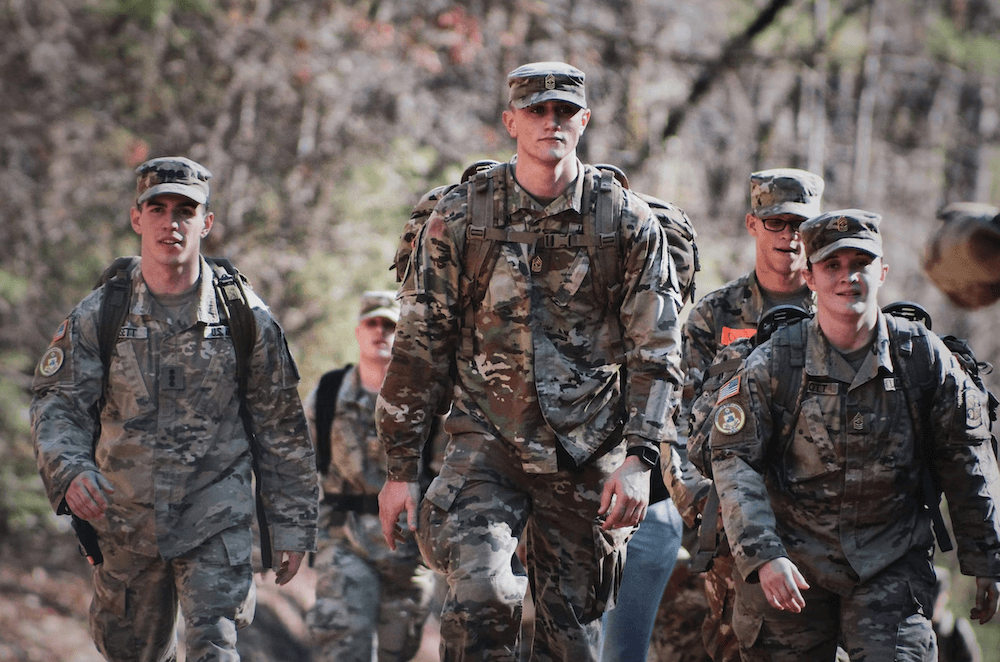As the second-largest Marine Corps base in the United States, Camp Lejeune has had a notorious history unlike any other military training facility to date.
From its early days as a WWII training point to its 30-plus-year water contamination crisis, the historical timeline of the military base has affected countless veterans and civilians — leaving many with health concerns that persist decades later.
While complete justice may now finally be underway for Camp Lejeune victims, the road to restitution hasn’t always been a smooth ride.
If you’re looking to file a Camp Lejeune lawsuit for your water contamination exposure, knowing the controversial history of the Marine Corps base can help aid your claim and get you the compensation you’re entitled to.

The Early Roots of the Camp Lejeune Military Base
Camp Lejeune’s history traces back to 1940 — when a WWII-stricken Europe had been witnessing heavy fighting within its borders that showed no signs of slowing down.
As the U.S. planned for imminent entry into the war, the 1st Marine Division had one mission: To transform a remote, sandy North Carolina pine forest into an East Coast amphibious training facility that would prep American soldiers for the raging battles overseas.
Once Congress authorized the over 14 million dollars needed for construction, the plans for the new military base quickly went underway. Led by Lieutenant Colonel William P.T Hill, the facility was constructed in 1941, and its main aim was to be home to the Marine Expeditionary Forces. Spanning 14 miles of beach along the Atlantic Seaboard, the initial 110,000-acre facility was hailed for its convenient location between two major ports at Wilmington and Morehead City — allowing for fast Marine Corps deployment.
After construction was finalized in 1942, the base was named Marine Barracks Camp Lejeune in honor of Lt. General John A. Lejeune, who served in the Marine Corps during World War I and the Spanish-American war in the 1800s.
In 1944, the new training facility was renamed to what we know today — Marine Corps Base Camp Lejeune.
Since its inception, the 246-square-mile facility has experienced remarkable events that, in one way or another, continue to affect Americans.
The Contaminated Water Crisis
According to the U.S. Department of Veterans Affairs, as many as 1 million people working or living at the base camp from the 1950s to 1980s were potentially exposed to drinking water contaminated with benzene and dangerous solvents, amongst other chemicals.
These volatile organic compounds (VOCs) were found at two out of eight water treatment plants at the base — both the Hadnot Point and the Tarawa Terrace distribution systems.
The primary contaminant at Hadnot Point water treatment was TCE (trichloroethylene), while Tarawa water treatment was contaminated by perchloroethylene and tetrachloroethylene from ABC One Hour Cleaners, an off-base cleaning firm in the region.
In addition, supply wells were contaminated by industrial area spills, waste disposal sites, and leaking underground storage tanks.
Camp Lejeune’s water contamination has been proven to have long-term and short-term health effects on inhabitants. According to the Agency for Toxic Substances and Disease Registry, contaminants such as trichloroethylene (TCE), tetrachloroethylene (PCE), and vinyl chloride increase the risk of cancers — multiple myeloma, leukemia, and kidney cancers — organ failure, neurological problems, and fertility issues to civilian workers and military personnel at Camp Lejeune.
Other adverse health effects that have been linked to water contamination at Camp Lejeune include:
- Kidney disease
- Skin diseases
- Vascular diseases
- Diabetes
- Liver disease
The Neglect of Military Base and Government Officials
The true extent of Camp Lejeune’s water contamination remains unknown to this day.
Despite a consensus on just how severe the water contamination epidemic was, one thing remains clear: Both military and government officials did not do their due diligence to protect their people.
It’s reported that as early as 1980, base officials were made aware of suspected and known carcinogens in the drinking water. However, the contaminated plants were not shut off until 1984 and 1985, and the true amount of benzene found in the water remains omitted in contractor reports.
The United States legal system also failed its Camp Lejeune victims for decades after the water contamination was first made public knowledge. In 2019, for example, over 4,400 civil claims were filed for tort benefits for Camp Lejeune — all denied by the Navy, which claimed immunity under the Federal Torts Claim Act, Feres doctrine, and sovereign immunity.
It wasn’t until August 2022 that the government finally accepted its role in denying full justice to military base victims.
The Camp Lejeune Justice Act, part of the Honoring Our PACT Act, now grants eligibility for lawsuits to be made against the government for anyone who served or was stationed at the base during the affected timeframe and developed a correlated health condition.
Victims have until August 10, 2024, to file a claim and receive complete justice for their hardships.
Start Your Camp Lejeune Lawsuit With the New York Attorneys at Leav & Steinberg LLP
For decades, the tragic history of Camp Lejeune has left countless victims without a means to gain the compensation they deserve.
At Leav & Steinberg LLP, our team of highly experienced attorneys recognizes the long-standing neglect of both military officials and the federal government. We’re ready to fight for our veterans, just as they fought for us in WWII and beyond.
Our NY personal injury attorneys offer in-person meetings and consultations with our Camp Lejeune clients by visiting their homes or inviting them to share their experiences in our offices.
We don’t charge attorney fees until your case is won and you’ve received the justice you’re entitled to.
Request a free consultation to learn more about how we can help you file your Camp Lejeune lawsuit today.









